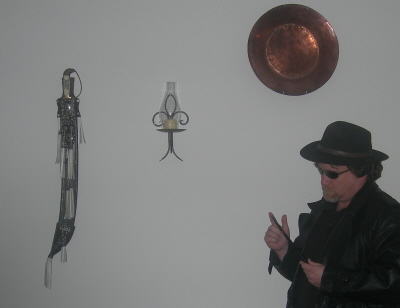|
About This Author
Come closer.
|
Carrion Luggage
Carrion Luggage
![Traveling Vulture [#2336297]
Blog header image](http://www.InkSpot.Com/main/trans.gif) ![Traveling Vulture [#2336297]
Blog header image Blog header image](/main/images/action/display/ver/1741870325/item_id/2336297.jpg)
Native to the Americas, the turkey vulture (Cathartes aura) travels widely in search of sustenance. While usually foraging alone, it relies on other individuals of its species for companionship and mutual protection. Sometimes misunderstood, sometimes feared, sometimes shunned, it nevertheless performs an important role in the ecosystem.
This scavenger bird is a marvel of efficiency. Rather than expend energy flapping its wings, it instead locates uplifting columns of air, and spirals within them in order to glide to greater heights. This behavior has been mistaken for opportunism, interpreted as if it is circling doomed terrestrial animals destined to be its next meal. In truth, the vulture takes advantage of these thermals to gain the altitude needed glide longer distances, flying not out of necessity, but for the joy of it.
It also avoids the exertion necessary to capture live prey, preferring instead to feast upon that which is already dead. In this behavior, it resembles many humans.
It is not what most of us would consider to be a pretty bird. While its habits are often off-putting, or even disgusting, to members of more fastidious species, the turkey vulture helps to keep the environment from being clogged with detritus. Hence its Latin binomial, which translates to English as "golden purifier."
I rarely know where the winds will take me next, or what I might find there. The journey is the destination.
November 20, 2025 at 9:09am November 20, 2025 at 9:09am
| |
From a source I know little about, The Packer, here's some good news from the produce section.
Cool. Now do purple cows.
Eating the rainbow has become easier and more flavorful in recent years...
That phrase, "eating the rainbow," always cracks me up. Mainly because I knew this very cute chick in college who went to costume parties as Rainbow Brite.
...especially when it comes to anthocyanins — the purple pigment that’s in blueberries, blackberries, red grape skins, eggplant and now — thanks to genetic modification — the purple tomato.
I suppose it's too much to hope for that they transfer to red wines.
Nathan Pumplin...
One fat-fingered typo away from being the most awesome aptronym ever.
...is CEO of Norfolk Healthy Produce, the company behind the Empress Purple Tomato, a bioengineered tomato made by adding two genes from snapdragons.
Cue "mad scientist" memes.
These tomatoes are a rich source of antioxidants because the purple pigments are in the whole tomato, not just the skin.
More importantly, they look cool.
But the trained molecular biologist, who has worked for nearly 20 years in R&D and commercializing new types of plants that solve problems, says bringing a GMO purple tomato to market has not been without challenges.
I'll bet. On the one side, you have people who have a knee-jerk reaction to anything "new." On the other, you have people who have a knee-jerk reaction to anything that whiffs of "artificial."
Adding to the challenge is the reality that most consumers don’t know what a GMO is, making education critical to driving demand for the purple tomato.
You know, I used to have a knee-jerk reaction, myself: that education would solve many problems. I have since lost my youthful naïveté on the subject, as I have learned that most people flat-out refuse to be educated.
While Pumplin says backlash against GMOs halted innovation and new product development for years, now he sees things coming full circle.
Education or not, sometimes, people just need time to get used to the ideas.
“We also have the Pinkglow pineapple from Del Monte on the market. We have the Arctic Apple, which is growing and doing very well in a lot of segments.”
That said, I'd draw the line at pink pineapple, myself.
Every bit of produce we eat has been genetically modified, either through the process of artificial selection or hybridization, or both. GMOs just continue that fine agricultural tradition. Could they be used for evil? Sure. All technology could. But that's no reason to have a blanket fear of genetic modification. |
© Copyright 2025 Robert Waltz (UN: cathartes02 at Writing.Com). All rights reserved.
Robert Waltz has granted InkSpot.Com, its affiliates and its syndicates non-exclusive rights to display this work.
|


![Traveling Vulture [#2336297]
Blog header image Blog header image](/main/images/action/display/ver/1741870325/item_id/2336297.jpg)